Last week, I was able to settle on what the map I was creating would illustrate and find trustworthy data to use. This week, the focus is on actually creating the map itself. To do this, I need shapefiles of the Chesapeake Bay Watershed.
I was able to source one from the Chesapeake Bay Program at data-chesbay.opendata.argis.com. This took me a handful of tries as most of the publicly available shape files of the Bay are a polygon of all the land and water considered to be within the Chesapeake Bay watershed. For the purposes of this map, I was looking for just the water itself.
As a reminder, this is a self-guided process where I’m using ChatGPT to guide me through learning how to use QGIS. I’ve never loaded a shapefile before and ChatGPT gave me clear instructions.
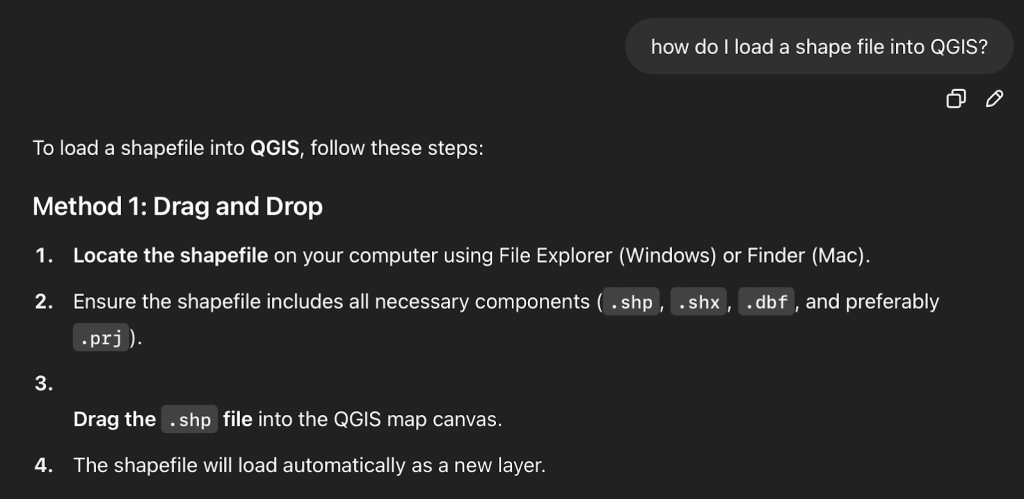
In order to load the shapefile into QGIS, I dragged the downloaded folder, which included .shp, .xml, .shx, .prj, .dbf, and .cpg files, into a blank new project. I felt a brief moment of triumph before realizing that getting the land surrounding the Bay into the project would likely not be as simple, but it was actually even easier.
QGIS has an OpenStreetMap layer built into the “XYZ Tiles” tab on the left side of the window. I turned it on, reordered the layers so that my shapefile of the water was over top of OSM, and that was all that needed to be done. The program had already lined up the shapefile of the Bay itself perfectly with where OSM had the Bay.
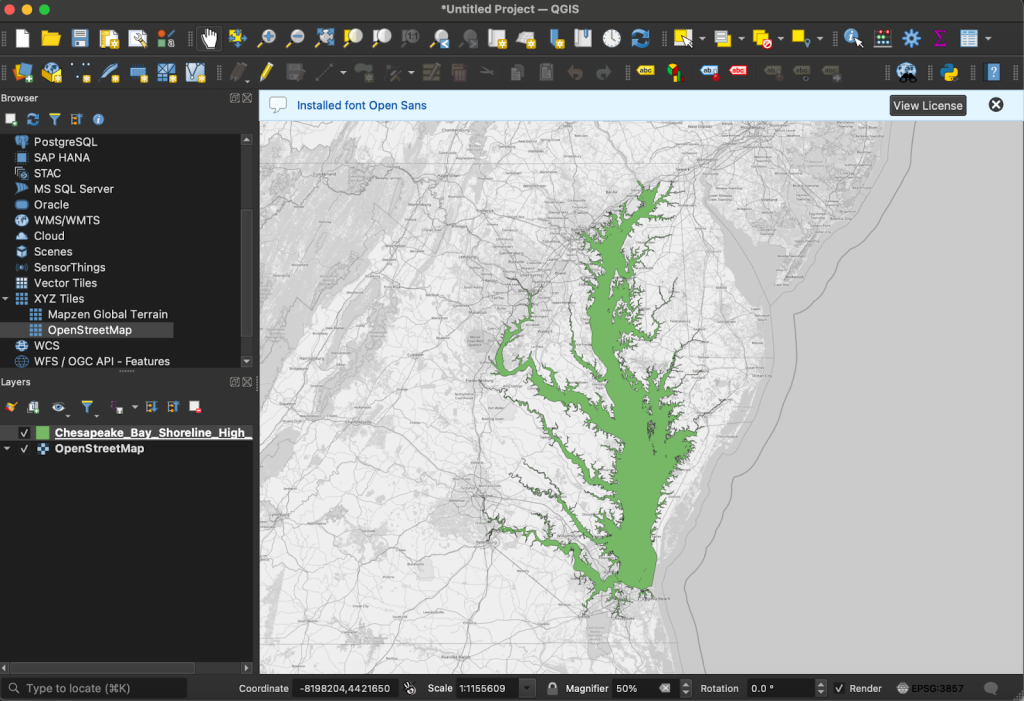
Now it’s time to go back to Professor ChatGPT. I need to know how to change the color of the shapefile before I can even worry about assigning different colors to different levels of crab population, finding out how to automatically change the color based on data in a table, or anything else.

Just to practice, I made the Bay crimson.
Step 1.
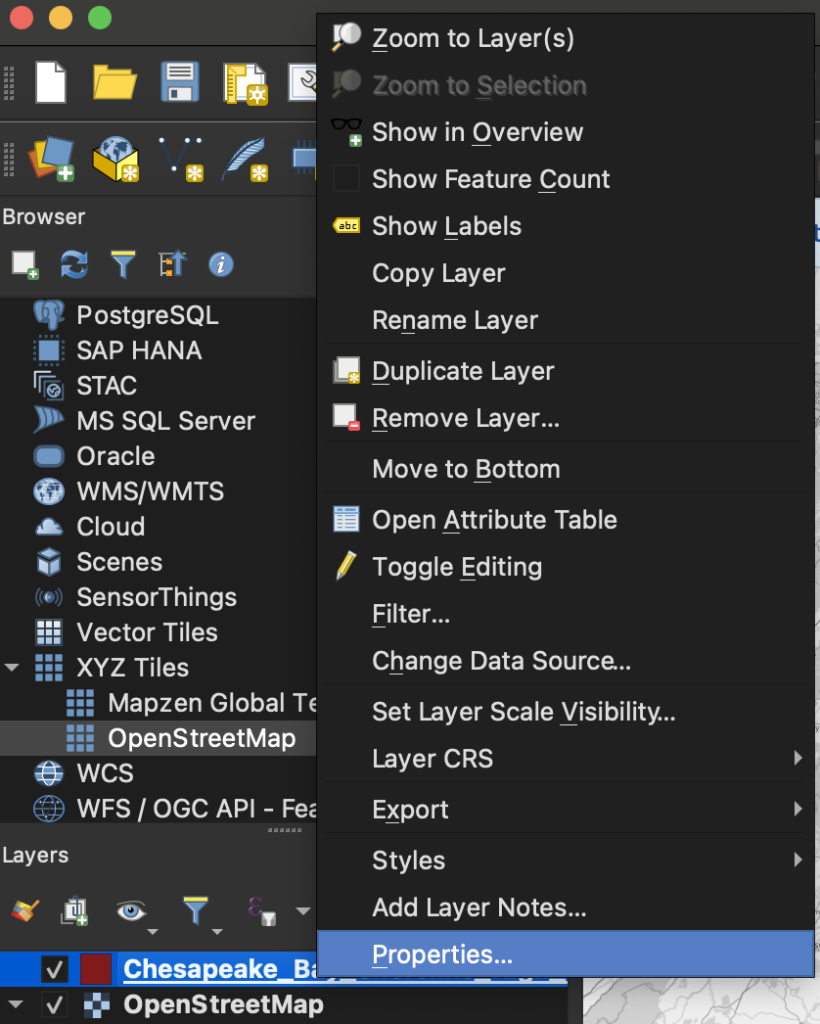
Step 2.
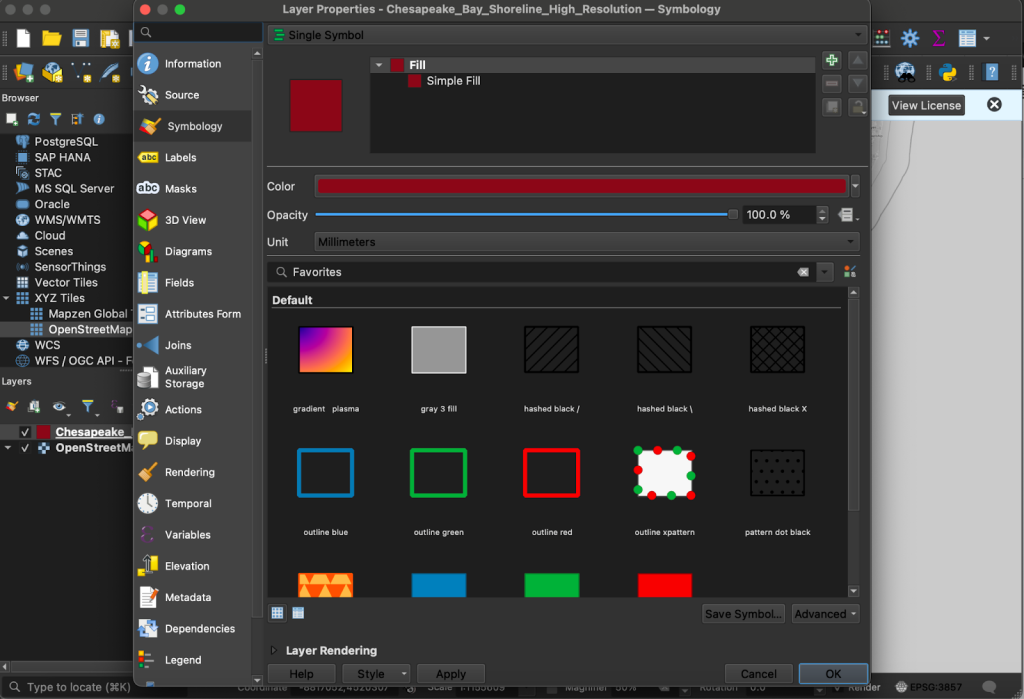
Step 3.
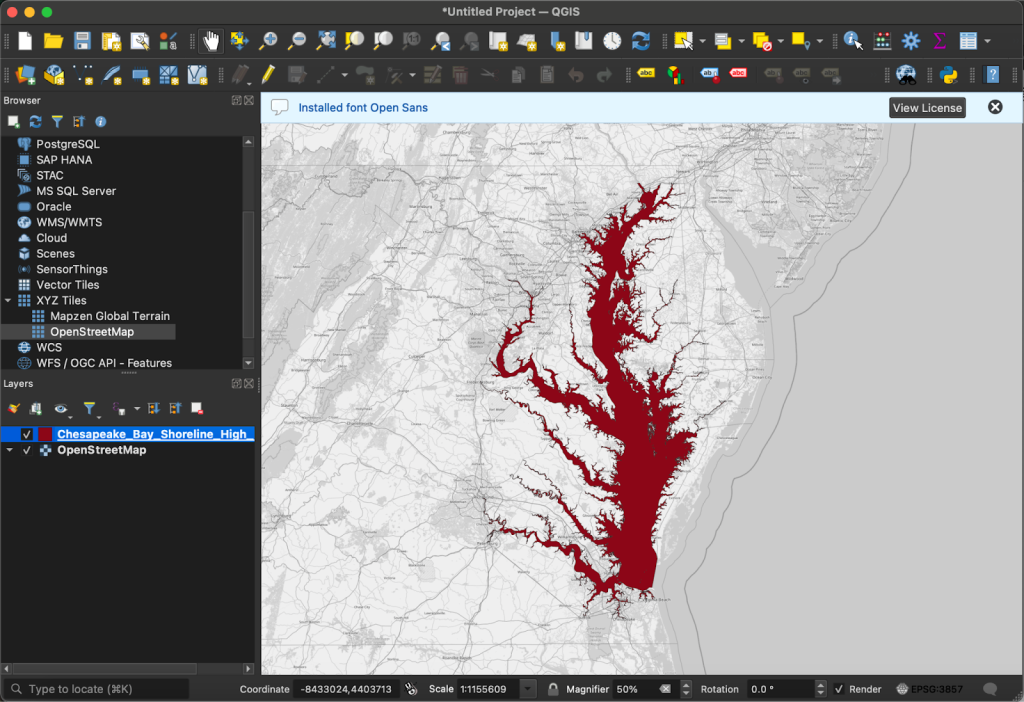
In my next post, I’ll be going back to ChatGPT to learn how I can set up a table of data and instruct QGIS to change the color of the water based on the data in said table. I’m not sure how that will work or look yet, but that’s part of the learning.